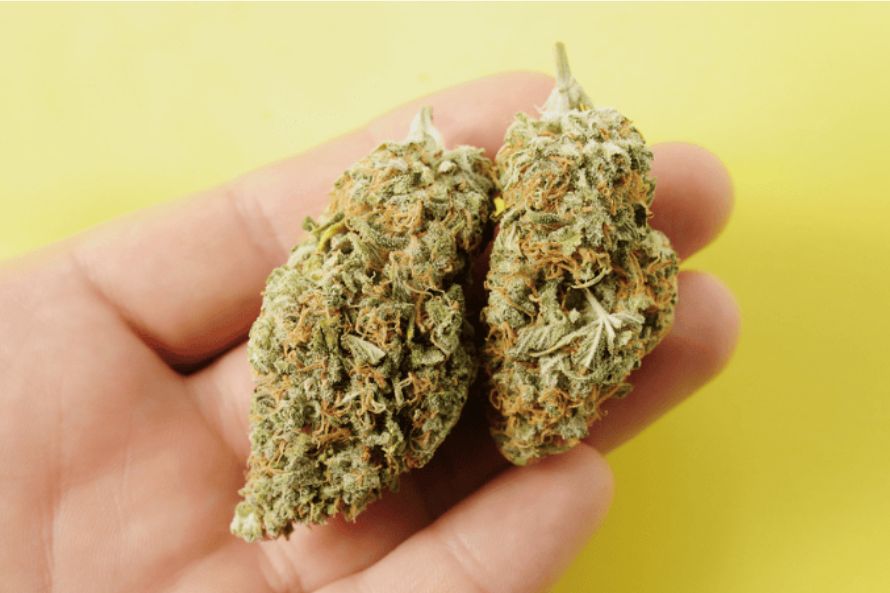The jargon surrounding cannabis can be intimidating to newcomers. Selecting the best strain can be challenging due to the seemingly endless variety of terpenes, cannabinoids, and cultivators. Even the most basic labels—hybrid, sativa, and indica—can be surprisingly misleading. To purchase cannabis strains from state-licensed dispensaries lawfully and avoid legal repercussions, you need to possess an online medical card.
Sativa and indica were the two traditional classifications for cannabis plants. The majority of contemporary strains, however, are actually hybrids due to decades of crossbreeding; they have characteristics from both “indica” and “sativa” in different proportions.
So what exactly is hybrid cannabis, and why is it important to users?
What’s Hybrid Weed?
Indica and Afghanica cannabis varieties are intentionally crossed to create hybrid strains. In order to create offspring that inherit desirable traits from each parent strain, breeders carefully choose these parent strains. This enables breeders to produce strains with particular growth characteristics, terpene profiles, and THC or CBD content.
Although there has long been a history of cannabis cultivation, the emergence of hybrid strains is a relatively new phenomenon. The geographical origin and growth patterns of the plants led to the widespread use of the terms “indica” and “sativa” only in the 1980s. Sativas, officially designated as Cannabis sativa subsp indica var indica, are usually taller and have less dense flowers, whereas indicas, officially classified as Cannabis sativa subsp indica var afghanica, are more likely to be short and produce denser flowers.
However, in the 1970s, breeders began to cross these specific varieties for some reason. As a result of this innovation, Skunk No. 1 is considered the first modern hybrid strain. This opened up this whole new world of cannabis experiences that has never been imagined before. Breeders could now directly pick and combine the qualities that are desired, such as aroma, taste, effect, and chemical make-up, of indica variety plants with those of Afghanica variety plants.
Currently, the cannabis market offers many varieties of hybrid crops, and the effects are as vast as the choice of qualities. The exact proportion of terpenes to cannabinoids that hybrid strains receive from the maternal plant causes a range of variation in characteristics. Nonetheless, hybrids may frequently possess a few universal traits:
- Effects: With hybrid, there exists an opportunity to have the best of both worlds of indica effects and sativa ones, which may help in enhancing one’s mental focus as well as body relaxation. It is worth stating that the degree to which hybrids produce physical or mental effects will, more often than not, resemble the dominant parent strain.
- Growth: Hybrids’ growth may be like indicas or sativas’.
- Yields: Hybrids are popular among many professionals as well as home growers because they are believed to have a huge production potential.
The following are examples of derivative landrace strains that bore hybrid cultivars such as Amnesia Haze, Blueberry, California Sour, and Northern Lights #5, among others.
Benefits of Hybrid Weed
- Specific Effects: Hybrids are a result of breeding, and therefore you find them with a number of different terpenes and cannabinoids. This may result in side effects such as increased attention, reduced anxiety, pleasure, and analgesia.
- Enhanced Genetics: Using crossbreeding techniques, the hybrids are endeavored to give plants with the best qualities of the two parent strains. This rising resistance is frequent in these hybrids and makes them adaptable to various climatic or growing conditions.
- Medical Versatility: Hybrid strains are the most wanted since they are possibly beneficial in treating some disorders. People working on breeding always aim at getting a resultant plant with a different cannabinoid and terpene composition. These strains are meant for those with chronic diseases such as chronic pain, anxiety, insomnia, and nausea, among other diseases. Due to it being pretty flexible, patients are able to choose cultivars that will reduce the prospects of developing unpleasant side effects and yet be very effective in the management of their symptoms.
- Diverse Flavor Profiles: Another less-obvious advantage of hybrid styles is the range of flavors that they carry; these are due to the blending of the diverse terpene profiles that they have inherited from their parent plants. Hybrids enhance the aspect of taste and smell, which are juicy, soil-like, Adobe, orange, pepper, and many other smells depending on the blend the client wants.
- Flexibility in Cultivation: The development of the hybrid strains is done with a specific aspect of cultivation in mind, so it possibly could be for both indoor and outdoor growing. Hybrids might also give the growers the getting better and reliability of delivering good quality cannabis crops due to pest and disease intolerances and crescendo part flexibility to different lighting and nutrient treatments.
Demerits of Hybrid Weed
Even though hybrids are very popular, you should think about any potential disadvantages to help you choose the best option for your needs, like:
- Preference for Particular Effects: Some people have a particular attitude toward some types of marijuana and can consume only those they like. Unfortunately, because of the extensive number of hybrid varieties, numerous puerile landrace strains, for example, Durban poison or Afghani Kush, can be scarcely found.
- Oversaturation & “trendy” Genetics: A large number of strains have developed due to the many hybrids available on the market. How can one tell whether a given offering represents authentically top-shelf cannabis, especially given that some breeders spend more time searching for the next meme-worthy dessert reference than focusing on delivering anything resembling balanced effects or even unique terpene attributes? Some cannabis lovers argue that some popular strains, including Gelato and many related hybrid varieties are overhyped and do not bring that special something.
Why You Might Prefer a Pure Strain Over a Hybrid
Some possible explanations for selecting a pure cannabis strain over the one containing other cannabinoids are described below.
- Specific Needs: Looking for a specific strand that gives you a relaxation/sleep high or one that gives a creative stimulant that does not give a ‘high’ or stoned-feeling (though the right hybrid can provide a specific high).
- Experience Level: Of course, the novice users may find it easier to understand the impact of a specific stain than the regular consumers.
- Personal Preference: For some individuals, something is enough—just the special recreational experiences that landrace cultivars offer.
It doesn’t matter whether you are cultivating pure strains or hybrid ones. It’s important to purposely choose an indica, a sativa, or any other cannabis strain that will be most appropriate for your specific preferences or needs.
Essential Tips for Purchasing Hybrid Weed
As much as there are benefits that are associated with hybrid cannabis, it is advisable that anyone planning to use it meets certain points so that it is easy to tell the least harm that is associated with it.
- Define your goals: Rather, when consuming cannabis, one needs to ask themselves: What kind of high are they aiming to achieve? Relaxation? Creativity? Pain relief? In case you decide to go for a hybrid strain, you should have in mind the impact you want to get.
- Check cannabinoids & terpene profiles: Originally, the percentage of terpenes and the two most prominent cannabinoids for the dispensary’s products should be available on its website or product label based on the laboratory analysis. This is why it is crucial to pay attention to the following aspects: Choose the terpenes that are most suitable for your taste since it will determine its flavor, smell, and possibly the effect.
- Do your research: It is possible to check the strain origin. You need to understand the parent strains if you are to make better forecasts about the effects that are possible.
- Explore reviews and strain descriptions: Just don’t trust the indica/sativa classification. Read impressions made by other people on websites, as well as information given at the product specification page. For this, one has to read reviews on strains from which you can find out what to expect.
- Avoid strains with unpleasant aromas: You found your sense of smell quite handy, As an overview of the final questionnaire, the helpfulness of the senses in everyday life has been discussed as: The probability is that even if it is good in smell, you might not even enjoy the experience that comes with it.
- Prioritize reputable sources: Choose your products from reliable brands or dispensary stores so that they have gone through proper testing. Lastly, the results from lab reports from third parties assure the consumer that they understand well what they are consuming.
Buying cannabis is personal greed. Experiment and explore; find out what suits you best, and the important thing is to enjoy exploring the new world of hybrid cannabis strains. It is usually advisable to speak with an MMJ doctor before selecting a strain of cannabis to address your condition. A medical professional can provide you with more information about which strain is most effective for you.
Also Read: Why CBD Oil is the Secret Ingredient for a Healthier Lifestyle




